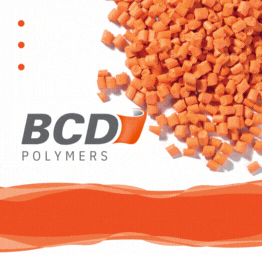Since 1990, the Toy Safety Ordinance has regulated the safety requirements for children’s toys that are newly placed on the market. It implements into German law the requirements of Directive 88/376/EEC on the approximation of the laws of the Member States concerning the safety of toys. With the new version in force since July 20, 2011, the requirements of Directive 2009/48/EC were transposed into German law.
Now MEPs are proposing improvements to EU rules to ensure that toys sold on the European market do not pose any risks to children.
On December 9, 2021, MEPs in the Internal Market and Consumer Protection Committee voted on a report on the safety of children’s toys. The report comprises proposals for tightening the current legal specifications to ensure that toys sold on the European market, including toys imported from other countries, are sustainable and safe. The report is due to be voted on in the plenary this month.
The explanatory statement said that the Toys Directive, which sets out safety requirements in relation to general and specific risks for toys intended for children under 14 years of age, was adopted back in 2009 and still has shortcomings. This applies in particular with regard to health and safety requirements.
By revising the Directive, the aim is to achieve better market surveillance in an effort to ensure that only safe and compliant toys are placed on the EU market. This includes both the testing of toys on the market and verification of manufacturers’ documentation in order to withdraw dangerous toys from the market and take action against those responsible for placing them on the market in the first place.
Internet marketplaces should also ensure that products sold online meet EU safety requirements.
The current specific chemical limits for toys intended for young children under 36 months or for toys intended to be put in the mouth are considered too high. This applies in particular to the limit values for potentially dangerous substances such as nitrosamines and nitrosatable substances laid down in the previous Directive. These arise during the manufacture of products made of natural or synthetic rubber where dithiocarbamates and thiurams are used as vulcanization accelerators, and which can be converted into N-nitrosamines and nitrosatable amines during the vulcanization process. Some N-nitrosamines are genotoxic carcinogens. According to the Federal Institute for Risk Assessment (BfR), no safe toxicological effect threshold can be derived for these; they can be carcinogenic even in the smallest quantities. In order to protect consumers, the ALARA principle is applied to minimize risk (“as low as reasonably achievable”): exposure to N-nitrosamines should be reduced as far as possible. N-nitrosamines are primarily ingested through food, especially foods such as cured or smoked meat and smoked fish. With regard to children as a particularly sensitive population group, exposure to N-nitrosamines from teats and toys must also be taken into account. In particular, toys made of natural or synthetic rubber that are put in the mouth by young children can be a source of N-nitrosamines. The ALARA principle should therefore also apply here. But even more importantly, since, according to the German Commodities Ordinance, less than 0.01 mg N-nitrosamines per kilogram of material may be released from these toys, but the EU Toys Directive allows the release of 0.05 mg N-nitrosamines per kilogram, such shortcomings should be eliminated or a consolidation of the applicable limit values for chemicals achieved.
For the production of teats, rattles, bath toys, teething rings, graspers etc., care should therefore be taken when selecting materials to ensure that no substances that are hazardous to health are contained or can be produced. The focus, therefore, is on thermoplastic elastomers (TPE), the production of which does not produce nitrosamines or nitrosatable substances.
ACTEGA offers ProvaMed® TPE, which have been specially compounded for baby products and are also free of PAH, thus complying with Regulation (EU) No. 1272/2013, which sets binding limits for PAH. They are BPA-free, bite-resistant and temperature-stable, i.e. can be boiled without incurring any changes to their mechanical values. They are particularly suitable for adhesion bonds with standard thermoplastics such as polyolefins. The fact that the material displays extremely low-migration characteristics is also of major significance. This is important, since, for example, a teat as an attachment on a baby bottle comes into contact with milk or possibly even fruit juices.
The SOFT EST.® portfolio also includes more TPE compounds for manufacturing children’s toys. For the protection of parents and their children, care was taken to avoid chemicals classified as questionable, such as softeners or latex, which are considered problematic. All products that come into contact with food are compliant with the provisions of EU Regulation 10/2011 and the corresponding FDA regulations. They are free of heavy metals and are adhesion-enhanced according to the respective requirement and application. And thus, also equipped for further, stricter EU rules or national regulations.


